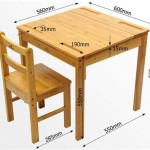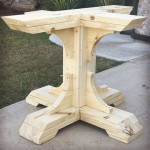Raised Bed Vegetable Garden Design Plans: Cultivating Success From the Ground Up
Raised bed vegetable gardening offers numerous advantages over traditional in-ground gardening, including improved drainage, better soil control, reduced soil compaction, and accessibility. Carefully planned design is paramount to maximizing these benefits and achieving a productive and aesthetically pleasing garden. This article delves into the core principles of raised bed vegetable garden design, providing a comprehensive overview of key planning considerations.
Understanding Site Assessment and Planning
Prior to constructing any raised bed, a thorough site assessment is crucial. This involves evaluating several factors that will influence the success of the garden. Sunlight is perhaps the most critical element. Most vegetables require at least six hours of direct sunlight per day to thrive. Observe the site throughout the day to determine the areas that receive adequate sunlight and identify any obstructions, such as trees or buildings, that may cast shadows.
Soil testing is another essential step. While raised beds offer the advantage of using custom soil mixes, understanding the existing soil composition can inform decisions about drainage and potential soil amendments. A basic soil test can reveal the pH level, nutrient content, and presence of any contaminants. This information can guide the selection of appropriate soil amendments to ensure optimal growing conditions.
Water access is also a primary concern. A convenient and reliable water source is necessary for irrigating the raised beds. Consider the proximity to a water spigot or the feasibility of installing an irrigation system. Furthermore, assess the natural drainage patterns of the site to prevent waterlogging. Poor drainage can lead to root rot and other plant diseases.
Lastly, consider the prevailing wind direction. Strong winds can damage plants or desiccate the soil. If the site is exposed to strong winds, consider installing windbreaks, such as fences or hedges, to protect the garden. The size and shape of the raised beds should also be considered in relation to the overall site layout. Consider the available space and design the beds to maximize growing area while maintaining accessibility for planting, weeding, and harvesting.
Accessibility is key to ease of maintenance. Leave adequate space between the beds for comfortable walking and maneuvering with tools. Consider incorporating pathways with a stable surface, such as gravel or pavers, to prevent soil compaction and weed growth. For gardeners with mobility limitations, raised beds can be designed at a height that minimizes bending and stooping. In these cases, consider the reach needed to tend the plants from a seated position.
Selecting Materials and Dimensions for Raised Beds
The choice of materials for constructing raised beds is a significant design consideration. Wood is a popular choice due to its affordability and ease of construction. Untreated cedar or redwood are naturally rot-resistant options, but they can be more expensive. Pressure-treated lumber is another option, but it is important to ensure that it is treated with an approved preservative safe for vegetable gardening. Avoid using creosote-treated lumber, as it contains harmful chemicals.
Concrete blocks or bricks are durable and long-lasting materials for raised beds. They are also relatively low-maintenance. However, they can be more expensive and require more effort to install. Metal raised beds are another option, offering durability and a modern aesthetic. Choose galvanized steel or aluminum to prevent rust and corrosion.
The dimensions of raised beds should be carefully considered to optimize plant growth and accessibility. A common width for raised beds is 4 feet, which allows gardeners to easily reach the center of the bed from either side. The length of the beds can vary depending on the available space and personal preference. However, it is generally recommended to keep the length manageable, typically no more than 8 to 12 feet, to facilitate easy access and maintenance.
The height of the raised beds should be determined based on the soil conditions and the types of vegetables being grown. A height of 6 to 12 inches is generally sufficient for most vegetables, as it provides adequate drainage and root space. However, for areas with poor soil or for growing root crops such as carrots or potatoes, a height of 18 to 24 inches may be necessary. Consider the physical capabilities of the gardener when determining the height, as taller beds minimize the need for bending and stooping.
The shape of the raised beds can also contribute to the overall design of the garden. Rectangular beds are the most common and practical, but L-shaped, U-shaped, or even irregularly shaped beds can add visual interest. Consider the aesthetic appeal of the beds in relation to the surrounding landscape. Color can also play a role. Painting or staining the raised beds can enhance their appearance and protect the materials from the elements. Choose colors that complement the overall garden design and the surrounding environment.
Implementing Efficient Planting Strategies and Crop Rotation
Effective planting strategies are critical for maximizing the yield and minimizing pest and disease problems in a raised bed vegetable garden. Companion planting involves growing different plants together that benefit each other. For example, planting basil near tomatoes can repel pests and improve tomato flavor. Planting marigolds around the perimeter of the raised beds can deter nematodes and other soil pests.
Succession planting involves planting crops in stages to extend the harvest season. For example, planting lettuce every two weeks will ensure a continuous supply of fresh lettuce throughout the growing season. Intercropping involves planting two or more crops together in the same space. This can be particularly effective in raised beds, where space is limited. For example, planting radishes between rows of carrots can help to break up the soil and deter carrot root flies.
Vertical gardening techniques can also be incorporated into raised bed designs to maximize space utilization. Trellises or stakes can be used to support climbing plants such as tomatoes, cucumbers, and beans. This not only saves space but also improves air circulation and reduces the risk of disease. Consider the mature size of the plants when planning the layout of the raised beds. Ensure that plants have adequate space to grow and that they do not overshadow or crowd each other.
Crop rotation is an essential practice for maintaining soil health and preventing the buildup of pests and diseases. Rotate crops annually, planting different families of vegetables in the same bed each year. This helps to break the life cycle of pests and diseases and prevents the depletion of specific nutrients in the soil. A simple crop rotation plan might involve dividing the raised beds into four sections and rotating crops in the following sequence: legumes (beans, peas), leafy greens (lettuce, spinach), fruiting vegetables (tomatoes, peppers), and root crops (carrots, potatoes). Record the crops that are planted in each bed each year to facilitate effective crop rotation planning.
When selecting vegetable varieties, consider factors such as disease resistance, maturity date, and suitability for the local climate. Choose varieties that are well-adapted to the growing conditions in the area and that are resistant to common pests and diseases. Pay attention to the days to maturity listed on seed packets and plant tags to ensure that the crops will have enough time to mature before the first frost. Also, consider the size and growth habit of the plants when selecting varieties for raised beds. Choose compact or dwarf varieties that are well-suited for container gardening and raised beds.
In conclusion, designing a successful raised bed vegetable garden requires careful planning and attention to detail. By considering site assessment, material selection, planting strategies, and crop rotation, gardeners can create a productive and aesthetically pleasing garden that provides a bountiful harvest.

Raised Bed Vegetable Garden Plan Modern Frontierswoman

Raised Bed Garden Layout Plans The Old Farmer S Almanac

4x8 Raised Bed Vegetable Garden Layout Ideas What To Sow Grow

4x8 Raised Bed Vegetable Garden Layout Ideas What To Sow Grow

Planning Your Vegetable Garden Mapping The Beds

Raised Bed Garden Layout Plans The Old Farmer S Almanac

Raised Bed Vegetable Garden Layout Ideas

4x8 Raised Bed Vegetable Garden Layout Ideas What To Sow Grow

Raised Bed Garden Layout Plans The Old Farmer S Almanac

Raised Bed Vegetable Garden Plan Modern Frontierswoman








